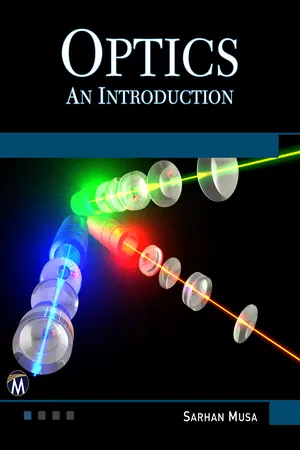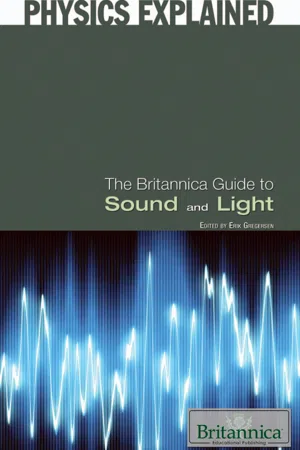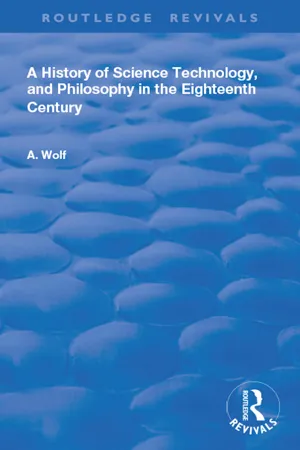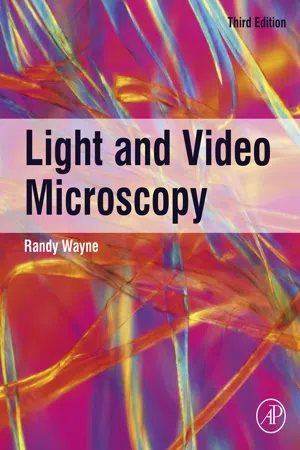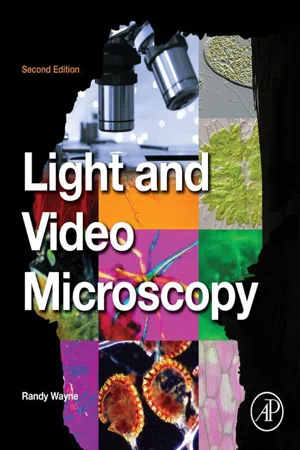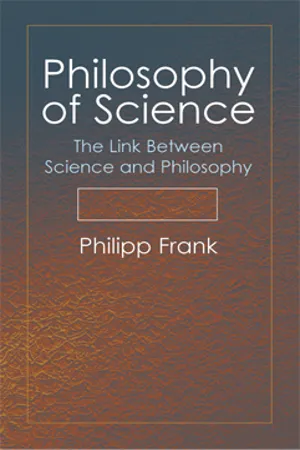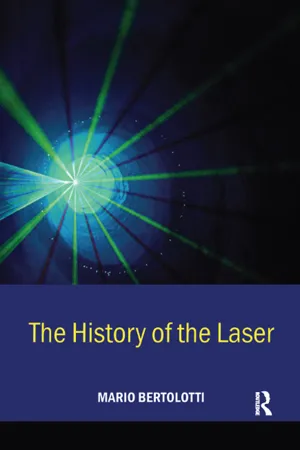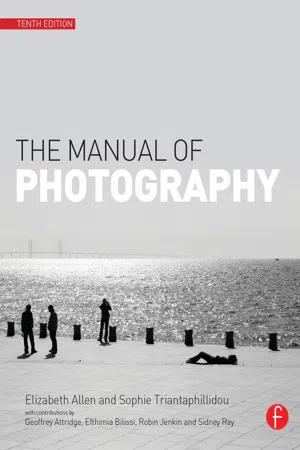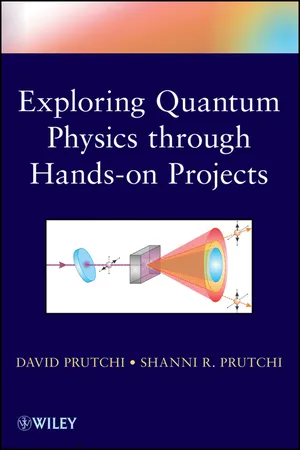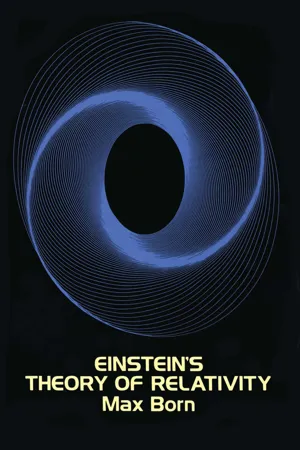Physics
Newton's and Huygens' Theories of Light
Newton's theory of light proposed that light is composed of particles, while Huygens' theory suggested that light behaves as a wave. Newton's theory was based on the corpuscular theory of light, while Huygens' theory was based on the wave theory of light. These two theories represented competing explanations for the nature of light, with the wave theory eventually gaining more support and leading to the development of wave optics.
Written by Perlego with AI-assistance
Related key terms
Related key terms
1 of 4
Related key terms
1 of 3
11 Key excerpts on "Newton's and Huygens' Theories of Light"
- eBook - ePub
Optics
An Introduction
- Sarhan M. Musa(Author)
- 2020(Publication Date)
- Mercury Learning and Information(Publisher)
emission theory was upheld by Huygens’s great contemporary Newton, although Young, who in 1801 developed further wave theory, gave credit of his ideas to Newton’s writings, which contained some basic notions pointing toward the wave picture of light.This chapter shows that the phenomena of interference, diffraction, and polarization of light can be satisfactorily explained only by postulating that light is a form of wave motion. The physicists concerned with the earlier development of such a concept indeed thought that light was a form of mechanical energy transported through space and matter very much like the flow of acoustic energy. Although this concept turned out to be erroneous, inasmuch as the light waves were subsequently shown to be associated with the transport of electromagnetic energy, it still went a long way in our understanding of the previous phenomena and many more. For a subsequent understanding of the transport of electromagnetic energy, it is therefore worthwhile to study wave motion in general terms and see how far the parallelism mentioned previously takes us along in this chapter.6.1 THE CORPUSCULAR THEORY OF LIGHTIn 1675, Newton sent to the Royal Society a paper in which he presented the fundamental postulates of his corpuscular (emission) theory of the nature of light. According to this theory, light consists of a stream of minute invisible particles, called corpuscles, moving at a great speed. These corpuscles were emitted in straight lines from a luminous source, and their mechanical impact on the retina stimulated the sensation of vision. Different colors were ascribed to different sized corpuscles. Newton also postulated “an ethereal medium much of the same constitution with air but far rarer, subtler and more strongly elastic.” Ether “pervades the pores of all material bodies but with a greater degree of rarity in these pores than in the free ethereal spaces.” When corpuscles “impinge on any refracting or reflecting superficies (a surface layer), must as necessarily excite vibrations in the ether, as stones do in water when thrown into it.” Nevertheless, Newton rejected the theory that vibrations of the ether should be regarded in themselves to constitute light, since it appeared to him to conflict with the fact of the rectilinear propagation of light. He arrived at these conclusions from considerations which are best expressed in his own words: - eBook - ePub
- Britannica Educational Publishing, Erik Gregersen(Authors)
- 2010(Publication Date)
- Britannica Educational Publishing(Publisher)
Newton’s careful investigations into the properties of light in the 1660s led to his discovery that white light consists of a mixture of colours. He struggled with a formulation of the nature of light, ultimately asserting in Opticks (1704) that light consists of a stream of corpuscles, or particles. To reconcile his particle model with the known law of refraction, Newton speculated that transparent objects (such as glass) exert attractive forces on the particles, with the consequence that the speed of light in a transparent medium is always greater than the speed of light in a vacuum. He also postulated that particles of different colours of light have slightly different masses, leading to different speeds in transparent media and hence different angles of refraction. Newton presented his speculations in Opticks in the form of a series of queries rather than as a set of postulates, possibly conveying an ambivalence regarding the ultimate nature of light. Because of his immense authority in the scientific community, there were few challenges to his particle model of light in the century after his death in 1727. Newton’s corpuscular model survived into the early years of the 19th century, at which time evidence for the wave nature of light became overwhelming. Theoretical and experimental work in the mid to late 19th century convincingly established light as an electromagnetic wave, and the issue seemed to be resolved by 1900. With the arrival of quantum mechanics in the early decades of the 20th century, however, the controversy over the nature of light resurfaced. As will be seen in the following sections, this scientific conflict between particle and wave models of light permeates the history of the subject. GEOMETRICAL OPTICS: LIGHT AS RAYS A detailed understanding of the nature of light was not needed for the development, beginning in the 1600s, of a practical science of optics and optical instrument design - Abraham Wolf(Author)
- 2019(Publication Date)
- Routledge(Publisher)
CHAPTER VII PHYSICS I. LIGHT II. SOUND I. LIGHT L ITTLE progress was made with the development of theories of light during the eighteenth century. The majority of physicists accepted some form of corpuscular hypothesis (or the “emission” theory, as it is frequently called), supposing the authority of Newton to be wholly on their side and ignoring the part played by aetheric waves in his explanations of periodic light phenomena. Newton had introduced such waves principally in order to account for the “fits” of easy reflection and easy transmission which were supposed alternately to possess the corpuscles. Many eighteenth-century physicists, however, were disposed to abandon the hypothesis of “fits” altogether. For instance, Boscovich (1758) accounted for the partial reflection and partial transmission of light, incident upon the surface of separation of two transparent media, by reference to a supposed polarity of the corpuscles, already suggested by Newton in connection with his explanation of double refraction. It was supposed that each light-corpuscle was endowed with different properties on different sides, e.g., with two poles, one of which was attracted and one repelled by matter, and that it was in a state of rotation whereby it presented its different sides alternately to the reflecting surface. Those who adhered to the corpuscular hypothesis were anxious to see it established securely by direct experimental evidence, and a number of attempts were made to supply this. (See J. Priestley: The History and Present State of Discoveries relating to Vision, Light, and Colours, 1772, pp. 385–90.) It was argued that if light consisted of material particles in rapid motion, it should possess a certain momentum which might be observed and measured. In 1708 Homberg reported to the French Academy of Sciences that he had detected a positive pressure of light; but doubt was cast on his results by Mairan, who attributed the results observed to convectional air-currents- eBook - ePub
- Randy O. Wayne(Author)
- 2019(Publication Date)
- Academic Press(Publisher)
The vibrations were equivalent to periodic changes in the density of the ether, and these variations put the light corpuscles into “easy fits of reflection or transmission.” Newton could not believe that light was a wave because he felt that if light in fact did travel as a wave, it should not only bend away from an opaque object, but it should also bend into the geometrical shadow. By contrast, Robert Hooke (Birch, 1968) thought: That light is a vibrating or tremulous motion of the medium, (which is thence called pellucid) produced from a like motion in the luminous body, after the same manner as sound was then generally explained by a tremulous motion of the medium conveying sound, produced therein by a tremulous motion of the sounding body: and that, as there are produced in sounds several harmonies by proportionate vibrations, so there are produced in light several curious and pleasant colours, by the proportionate and harmonium motions of vibrations intermingled; and as those of one are sensated by the ear, so those of the other are by the eye. As a consequence of the great achievements of Isaac Newton and the hagiographic attitude and less than critical thoughts of the followers of this great man, the corpuscular theory of light predominated, and Huygens’ and Hooke's wave theory of light lay fallow for almost 100 years (Tait, 1884, 1889). The wave theory was revived by Thomas Young (1794, 1800, 1801a), a botanist, a translator of the Rosetta stone, and a physician who was trying his hand at teaching Natural Philosophy at the Royal Institution (Peacock, 1855). While preparing his lectures, Young reviewed the similarities between sound and light, and reexamined the objections that Newton had made to the wave theory of light. Young, who studied the master, not the followers, apes, epigons, imitators, or votaries, concluded that the wave theory in fact could describe what happens to light when it undergoes diffraction as well as reflection and refraction - eBook - ePub
- Randy O. Wayne(Author)
- 2013(Publication Date)
- Academic Press(Publisher)
The vibrations were equivalent to periodic changes in the density of the ether, and these variations put the light corpuscles into “easy fits of reflection or transmission.” Newton could not believe that light was a wave because he felt that if light in fact did travel as a wave, it should not only bend away from an opaque object, but it should also bend into the geometrical shadow. By contrast, Robert Hooke (Birch, 1968) thought: That light is a vibrating or tremulous motion of the medium, (which is thence called pellucid) produced from a like motion in the luminous body, after the same manner as sound was then generally explained by a tremulous motion of the medium conveying sound, produced therein by a tremulous motion of the sounding body: and that, as there are produced in sounds several harmonies by proportionate vibrations, so there are produced in light several curious and pleasant colours, by the proportionate and harmonium motions of vibrations intermingled; and as those of one are sensated by the ear, so those of the other are by the eye. As a consequence of the great achievements of Isaac Newton and the hagiographic attitude and less than critical thoughts of the followers of this great man, the corpuscular theory of light predominated, and Huygens’ and Hooke’s wave theory of light lay fallow for almost 100 years (Tait, 1884, 1889). The wave theory was revived by Thomas Young (1794, 1800, 1801a), a botanist, a translator of the Rosetta stone, and a physician who was trying his hand at teaching Natural Philosophy at the Royal Institution (Peacock, 1855). While preparing his lectures, Young reviewed the similarities between sound and light, and reexamined the objections that Newton had made to the wave theory of light. Young, who studied the master, not the followers, apes, epigones, imitators, or votaries, concluded that the wave theory in fact could describe what happens to light when it undergoes diffraction as well as reflection and refraction - eBook - ePub
Philosophy of Science
The Link Between Science and Philosophy
- Philipp Frank(Author)
- 2013(Publication Date)
- Dover Publications(Publisher)
This result can certainly not be derived from Newton’s three laws of motion since the period (interval) of the fits does not occur in any law of force. Hence, there is no doubt that Newton did not think that his laws of motion were sufficient to derive the motion of light corpuscles. He suggested an addition which has definitely some similarity to de Broglie’s wave mechanics.2. The “Crucial Experiment” Versus the Corpuscular Theory of Light
In addition to the corpuscular hypothesis, there existed in Newton’s time an alternative hypothesis that derived the law of refraction and other optical laws from the assumption that light is a propagation of density maxima or, more generally, of condensations in an elastic medium filling the whole world space. If in such a medium a maximum density at one point P is produced, this density will expand in spherical surfaces of equal density with P as a center. Therefore, it is not easy to understand how such a point of maximum density can move along a straight line as light rays do.This hypothesis, that light consists in the propagation of condensations or compressions through a medium, was elaborated by Huyghens5 into a theory from which could be derived the laws of reflection and refraction, including the special case of rectilinear rays. In order to achieve this result, Huyghens had to introduce an hypothesis which tells us under what conditions compressions can destroy or reinforce each other. This hypothesis has been known as Huyghens’ principle and has since been taught in all courses of elementary physics. To Newton, however, an hypothesis seemed not worthy to be recommended, if by it, “the simplest phenomena,” a rectilinear ray, cannot be explained in a simple way. He wrote:6Are not all hypotheses erroneous, in which light is supposed to consist in pressure or motion propagated through a fluid medium? . . . For pressure or motion cannot be propagated in a fluid in right lines beyond an obstacle which stops part of the motion but it will bend . . . beyond the obstacle. - eBook - ePub
- Mario Bertolotti(Author)
- 2004(Publication Date)
- CRC Press(Publisher)
CHAPTER 1WAVE AND CORPUSCULAR THEORIES OF LIGHT
The three characters who played a central role in the history of the theory of light were Hooke, Huygens and Newton. Hooke and Newton were from Britain; Huygens was Dutch. They made notable contributions to several fields of physics, and established the basis for a modern understanding of light even though they proposed contradictory theories. One was based on a wave interpretation, while the other considered light to be composed of small particles. The two theories, which seemed irreconcilable, aroused fierce discussion and argument among both the protagonists and their supporters. A torrent of words has been written about this dispute; here we will not go deeply into the subject but limit ourselves to the most important facts.Robert Hooke
Robert Hooke was born in Freshwater on the Isle of Wight in 1635 and died in London in 1703. He was a single-minded man who designed and built a number of instruments and devices: we owe to him, for example, the innovative use of the spiral spring in the balance mechanism of clocks, which allows their accurate operation. He expressed the law of proportionality between elastic deformations and strain which bears his name, performed a number of astronomical observations, and vindicated some of the work of Newton regarding the discovery of the Law of Gravitation, of which he really had only a vague intuition.Through meticulous observations with a 20 m long telescope that vibrated in the slightest breeze, he was the first to describe the shadow that Saturn’s ring cast on the planet and to make detailed maps of the Moon’s craters. He was an accomplished surveyor and architect who helped to rebuild London after the Great Fire of 1666. He was one of the first to articulate the concept of extinction and who suggested evolution two centuries before Charles Darwin. - eBook - ePub
- R.A. Edwards(Author)
- 2014(Publication Date)
- Pergamon(Publisher)
CHAPTER 24The Wave Nature of Light
Publisher Summary
This chapter presents the details of examination of the wave nature of light and the properties of different optical instruments. The resolving power of a telescope is the reciprocal of the smallest angle, which the line joining the two stars subtends at the objective of the telescope for which resolution of the images is just apparent. If a beam of polarized light is passed through solutions of certain substances, for example, sugar, the plane of vibration is turned through a certain angle that is proportional to the length of the path of light in the solution and to its concentration. It depends also on the nature of the substance in solution. The substance is said to be optically active. Some transparent substances become doubly refracting when subjected to stress. Examination under polarized light of models of structures made from such substances enables the amount of strain at certain points of the structure to be estimated.24.1 Huygens’ Wave Theory
It was the Dutch scientist Christiaan Huygens who, in the late seventeenth century, first proposed the wave theory of light. The great rival theory of the time was the corpuscular theory of Isaac Newton who interpreted light propagation as a stream of “corpuscles” or tiny particles. This latter theory had the merit of satisfactorily explaining why light does not (at least apparently) bend round corners. Using Huygens’ theory it is more difficult to explain this fact, but as we have seen (Chapter 12 ) all wave phenomena exhibit diffraction effects and light is no exception.HUYGENS’ CONSTRUCTION
Suppose S represents a very small (“point”) source of light (Fig. 24.1 ). Rays may be drawn in all directions from S representing the directions in which the light travels from it. The dotted lines represent successive positions, after equal intervals of time, of what are called wave fronts . A surface containing all points of the medium where the phase of the disturbance is instantaneously the same, as the wave advances, may be regarded as a wave front. Thus any particular “crest” or “trough” of the advancing wave can be considered as a wave front. From a point source these surfaces are spheres, concentric about the point source, and represented as circles in the figure. In the case of a parallel beam of light the successive positions of a wave front are plane surfaces normal to the direction in which the light is travelling, i.e. normal to the rays. Huygens suggested that each and every point of a wave front is to be regarded as a source of secondary wavelets and that the new position of the wave front after some interval of time t is such that it touches, tangentially, all the secondary wavelets originating from the previous position, t units of time earlier. Thus the front W (Fig. 24.2 ) advances to W′ after a time t where the radius of all the secondary wavelets from W is ct, c being the velocity of light. W′ is the “envelope” of all the secondary wavelets, i.e. W′ - eBook - ePub
- Elizabeth Allen, Sophie Triantaphillidou(Authors)
- 2012(Publication Date)
- Routledge(Publisher)
• A revised interest in the study of optics in Europe after the thirteenth century led to the development of the refracting telescope. In 1621 Willebrord Snell developed the Law of Refraction, also known as Snell’s Law (page 104). Descartes independently derived the same law in 1637.• Isaac Newton (1642–1727) considered light to be a stream of moving particles and this became known as corpuscular theory. The theory suggested that the particles travelled in straight lines, providing an explanation for both reflection and the casting of shadows. Famously, Newton also used a prism to disperse white light and concluded correctly that white light is made of a mixture of colours.• Francesco Grimaldi (1618–1663) observed that shadows were slightly smaller than predicted due to ‘fringing’ at the edges (diffraction effects).• Robert Hooke (1635–1703) proposed that light travelled in the form of a wave rather than a particle, which allowed diffraction effects to be explained as a result of constructive and destructive interference of the waves.• Christian Huygens (1629–1695) further developed the idea that light was a wave in a universal medium, the ‘aether’.• Thomas Young (1773–1829) experimented with shining coherent light through a pair of closely spaced slits in a screen to produce a diffraction pattern of bright and dark fringes. The results could not be easily explained by particle (corpuscular) theory and led him to further develop the wave theory of light, with the Principle of Interference. He was able to explain Newton’s results with dispersion of white light through a prism in terms of wave theory and even determined wavelengths for the colours.• Michael Faraday (1791–1867) first established a relationship between light and electromagnetism. James Clerk Maxwell proved theoretically that electric and magnetic fields could continually propagate one another, travelling as a wave at a specific speed, close to experimentally determined values for the speed of light. This was a huge advance – enough to allow the theory that light was an electromagnetic wave to replace Newton’s corpuscular theory. - David Prutchi(Author)
- 2012(Publication Date)
- Wiley(Publisher)
Now, when a light particle travels within a medium, such as air or water, it is surrounded on all sides by the same number of matter particles. Newton explained that the attractive forces acting on a light particle would cancel each other out, allowing the light to travel in a straight line. However, near the air–water boundary, the light particle would feel more attracted by water than by air, given the water’s higher density of “matter particles.” Newton proposed that as the light particle moves into the water, it experiences an attractive force toward the water, which increases the light particle’s velocity component in the direction of the water, but not in the direction parallel to the water.This velocity increase in the direction perpendicular to the air–water boundary would deflect the light closer to perpendicular to the surface, which is exactly what is observed in experiments. Newton thus claimed that the velocity of light particles is different in different transparent materials, believing that light would travel faster in water than in air. (We now know this is not the case, but we’ll get to that in a minute.)Newton didn’t equate gravity with the attractive force between matter particles and light particles. He needed this force to be equal for all light particles crossing the boundary between two materials to explain how a prism separates white light into the colors of the rainbow. Newton proposed that the mass of a light particle depended on its color. In his view, red light particles would be more massive than violet light particles. Because of their increased inertia, red light particles would thus be deflected less when crossing the boundary between materials.Newton’s greatness conferred credibility to his theory, but it was not the only one around. Dutch physicist Christiaan Huygens had proposed an earlier, competing theory: light consists of waves. This was supported by the observation that two intersecting beams of light did not bounce off each other as would be expected if they were composed of particles. However, Huygens could not explain color, and the wave versus particle debate for the nature of light raged until decisive experiments were carried out in the nineteenth century.- eBook - ePub
- Max Born(Author)
- 2012(Publication Date)
- Dover Publications(Publisher)
From this it follows, however, that the velocity and direction of light rays must appear different in every inertial system. Thus it was to be expected that it would be possible to ascertain the velocity of the earth or of the solar system by observing optical phenomena at the surface of the earth which are determined by the velocity and direction of light. But all experiments performed with this end in view led to a negative result. Hence it appears that the velocity and direction of light rays are quite independent of the motion of the celestial body on which the observations are carried out. Or, in other words, optical phenomena depend only on the relative motions of material bodies.This is a principle of relativity which seems quite similar to the classical principle of mechanics, and yet it has a different meaning. For it refers to velocities and directions of motion, and in mechanics these are not independent of the motion of the system of reference.Now there are two possible points of view. One of these starts from the assumption that optical observations actually introduce something that is fundamentally new—namely, that light behaves differently from material bodies as regards direction and velocity. If the optical observations are accepted as convincing evidence, this point of view must be adopted, providing all speculations about the nature of light are left out of consideration. We shall see that Einstein finally pursued this path. However, it requires freedom from the conventions of traditional theory which is attained only when the Gordian knot of constructions and hypotheses has become so intricate that the only solution left is to cut it.In our discussion above, however, we were still thinking in terms of the most flourishing period of the theory of the mechanical ether. This theory was compelled to regard the optical principle of relativity as a secondary, in a certain sense half-accidental, phenomenon brought about by the compensating effect of causes that were acting in opposite directions. The fact that it was possible to dismiss the anomalies of optical phenomena in this way was due somewhat to the circumstance that one could still make hypotheses about how the ether moves and is influenced in its motion by moving bodies. Now it is the achievement of Fresnel’s convection hypothesis that it accounts for the optical principle of relativity, as far as quantities of the first order are concerned. Until the accuracy of optical measurements did attain the great improvement necessary to measure quantities of the second order, this theory satisfied all demands of experiment, with one possible exception, to which, curiously enough, very little attention was paid. If, however, improved accuracy in astronomical measurement should arrive at the result that by observing the eclipses of Jupiter’s satellites according to the old method of Römer (see p. 91
Index pages curate the most relevant extracts from our library of academic textbooks. They’ve been created using an in-house natural language model (NLM), each adding context and meaning to key research topics.
Explore more topic indexes
Explore more topic indexes
1 of 6
Explore more topic indexes
1 of 4
